INTRODUCTION
Roughly 5 months ago i had the opportunity to visit one of the largest data centers in the world (located inside the EU) and needless to say the moment i stepped in their quite massive installation i was overwhelmed not only by their amount of servers and drive arrays (actually they use HDDs, SSDs and flash drives) but also by their local data transfer speeds (40GbE anyone?) and extreme cooling methods (did you know that they even use warm water for cooling?). Anyways when i got back to our "lab" (can hardly even call it that after experiencing what i did) i decided to perform several upgrades the first of which had to do with our NAS testing methodology since 1GbE has been maxed out for years now. Well the next "obvious" step was for us to implement 10GbE testing (40GbE is the next step, don't know the when however) and a couple of weeks ago we finished "gathering" all the necessary components. Having the hardware however is not enough so the very first NAS server to make use of that is the brand new TVS-871U-RP-i3-4G by our very good friends over at QNAP.
QNAP Systems, Inc., as its brand promise "Quality Network Appliance Provider", aims to deliver comprehensive offerings of cutting edge network attached storage (NAS) and network video recorder (NVR) solutions featured with ease-of-use, robust operation, large storage capacity, and trustworthy reliability. QNAP integrates technologies and designs to bring forth quality products that effectively improve business efficiency on file sharing, virtualization applications, storage management and surveillance in the business environments, as well as enrich entertainment life for home users with the offering of a fun multimedia center experience. Headquartered in Taipei, QNAP delivers its solutions to the global market with nonstop innovation and passion.
When we got the TurboNAS TS-469U-RP from QNAP roughly 4 years ago it was our first real encounter with a rack mount NAS server (one which we could actually test) and largely thanks to its excellent performance, height (wide and long but quite thin) and dual power supply units (redundant power supply feature) it earned a permanent place in our lab ever since. That however was then and so the brand new TVS-871U-RP-i3-4G is much more advanced compared to the TS-469U-RP in more areas than even we would expect. So this time over under the hood we see a powerful dual-core Intel Core i3-4150 processor running at 3.5GHz, 4GB DDR3 RAM running at 1600MHz (four slots expandable to 32GB), 512MB flash DOM and two mSATA ports for read cashing (for use with mSATA SSDs). We also have 8 SATA III hot-swappable bays, 4 USB 3.0 ports, 4 USB 2.0 ports, 4 Gigabit RJ-45 Ethernet ports, two PCIe expansion slots (x8/x4) and of course two switching power supplies (250W each). QNAP also makes the TVS-871U-RP available in two more flavors one with a slightly less powerful dual-core Intel Pentium G3250 processor running at 3.1GHz and one with a more powerful quad-core Intel Core i5-4590S processor running at 3GHz and with 8GB of DDR3 RAM right out of the box.
SPECIFICATIONS AND FEATURES
PACKAGING AND CONTENTS
Just like with the TS-469U-RP the TVS-871U-RP-i3-4G arrived inside a large plain cardboard box.
Inside the box there are two foam spacers used to secure the NAS and a cardboard box with the rest of the bundle.
The bundle is quite rich so along with the TVS-871U-RP-i3-4G you will also get 4 Ethernet cables, two power cords, two tray keys (never understood why not as many keys as the trays), installation instructions and two small bags with screws for 2.5/3.5" drives.
THE TVS-871U-RP-I3-4G EXTERIOR
The 9.9kg heavy TVS-871U-RP measures 482mm in length, 534mm in depth and just 89mm in height.
Once again the company logo is placed on the left upper corner of the fascia.
I was slightly disappointed to see that the TVS-871U-RP doesn't have a front LCD status screen but just 4 small activity LEDs (10 GbE, Status, LAN, Storage Expansion Port Status) right beneath the power on/off button.
This model offers 8 removable trays all of which have their very own status LEDs placed on the right side of the fascia and of course locks.
The trays can accommodate both 2.5 and 3.5 inch drives and are made by aluminum.
On the top left corner QNAP has placed the cloud sticker which can simplify installation of the NAS.
The HDD sequence sticker is placed on the exact opposite side.
Everything else is placed at the rear of the NAS.
Here we see 4 RJ-45 Gigabit Ethernet Ports, 4 USB 3.0 ports, 2 USB 2.0 ports (strangely enough all the USB ports are at the rear), HDMI port, two expansion slots and two 250W PSUs (cooled by their own 40mm fans).
THE TVS-871U-RP-I3-4G INTERIOR
The switching PSUs used are by Delta Electronics and offer up to 250W each with 20A on the +12v rail (if you don't care about the redundant feature you can give power only to one of the two and thus cut down on power consumption).
Now this is why we like rack mount NAS models so much since we're basically talking about regular PCs (the large heatsink is placed over the CPU).
QNAP has used a 512MB flash DOM from Apacer just like with most of their models.
With two available mSATA ports you can boost the performance of the unit to even higher numbers by adding mSATA flash modules (recommended mostly for 10GbE use however).
The TVS-871U-RP has two PCIe slots, one x4 and one x8 (pay extra attention to this because initially we had the 10GbE card plugged into the x4 one).
There are 4 memory slots on the mainboard two of which are taken by 4GB of DDR3 RAM running at 1600MHz (tried adding two extra modules but for some reason the ones we have here are incompatible).
With 3 AVC 70mm high-speed fans (and thus quite noisy) i really don't know why QNAP (and others with similar models) is using a fanless heatsink for the CPU.
10GbE tests require extra cards and for the review of the TVS-871U-RP we used the LAN-10G2T-U dual-port model by QNAP which makes use of the same XT540-AT2 10GbE Ethernet chip as the Intel card we got for our test rig.
Two 10GbE cards however is not enough, you also need a compatible switch and nothing beats the ProSafe XS712T 10G smart model by Netgear (offers 12 10GBase-T connections and 2 combo SFP+ 10G Fiber ports).
Of course we also got all the necessary CAT6a cables (CAT6a or CAT7 cables are required for 10GbE) and made use of our 6 Seagate Constellation ES.3 4TB SATA III drives (we could had used 8 or 4-6 SSDs to get even higher performance numbers but we've used up to 6 so far so that wouldn't be "fair" to our previous tests).
THE XS712T





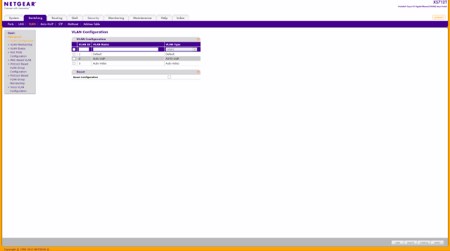





This review isn't about the XS712T but since such special equipment costs quite a bit we think you all should know what they offer in terms of features and settings so a few snapshots of its "rich" web interface are in order.
SETUP
Before you start setting up the NAS you need the latest version of the Qfinder software which you can download from the official QNAP support page.
Once you plug the NAS into your modem/router/switch and start the Qfinder program you will see the above screen.
You can choose between a quick setup or a manual setup in the next window (we chose manual).




After you make the choice you only have to enter a new name for the NAS and a new password (if you want to change the default ones), setup the network settings and choose the configuration of your drives.
The save settings procedure takes around 3 minutes to complete.
WEB INTERFACE PART 1
The default QTS login screen is either filed with many colorful pictures (home oriented models) or is plain like the one we see this time (you can always choose which one you want from the settings menu).
The GUI screen looks great as always and pretty much everything you need is located at the main screen.
The very detailed resource monitor can be accessed from the lower left corner while a drop down start-like menu can be accessed from the top left corner (once again one of the drives was considered faulty so we ran the full test procedure twice with no problems).
As always everything goes through the control panel of the QTS.
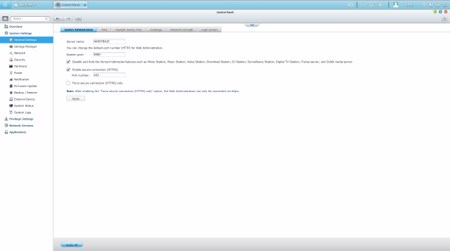








Via the System Settings menu you can set the name for the server, adjust time, set a password, specify your location, adjust the network IP, play around with power options, set notifications, check the state of the installed drives, create RAID and Virtual drives, enable/disable security settings, configure the speed of the fan, check hardware information, setup backup options, access external device settings, check the logs and of course perform firmware updates.
The Privilege Settings tab is very basic and allows you to create new users, assign those users to groups, setup shared folders, set specific quotas for each user and configure domain security.


From within the Network Services menu you will find everything network-related including FTP settings, Telnet service settings and service discovery settings. You can also setup/configure the Qsync application which allows you to have your files synced between the NAS and your other internet capable devices at all times.
WEB INTERFACE PART 2
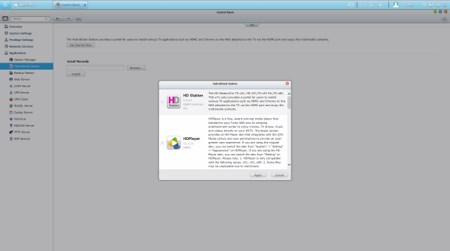

The TVS-871U-RP has an HDMI video output so if you want you can connect it to your TV set (a bit loud for that but long HDMI cables do exist). However to do use KODI and several other programs/stations (you can choose which) from the comfort of your couch you will need to download these programs from the HybridDesk Station tab as seen above.
The NAS can also be used to backup files to and from it via the Backup Station.
You can also use it as a web server if you don’t have very large requirements (or if you do and have a static connection).
As always the File Station allows you to transfer files to and from the NAS and looks quite a bit like the Windows explorer.
Powerful systems like the TVS-871U-RP also allow you to use the Virtualization Station to load other operating systems.
By default the QTS has some applications/stations installed but you can install a lot more from within the App Center.
Via the Photo Station you can see and share all your pictures with other PCs and mobile devices.
With the Music Station you can stream and playback your entire music collection without switching to an external application.

You can use the Download Station for torrents or direct HTTP/FTP download (I do prefer rutorrent myself).
The Surveillance Station is quite interesting in the TVS-871U-RP mainly because you’re getting 4 licenses by default and you also get asked where the app should place the recordings in the drive.

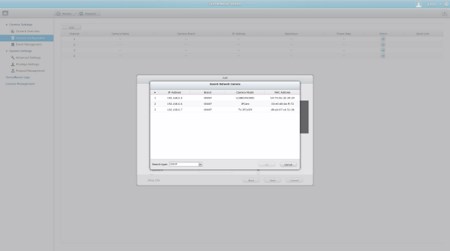
However just like with previous models you will need to switch from UDP/UPnP to ONViF detection if your cameras support it (only 1 out of the 3 around the lab was detected with UDP/UPnP).


The rest of the tabs remain pretty much the same so once again you get various settings to choose from and of course the ability to add more camera licenses.
ANDROID/IOS APPS






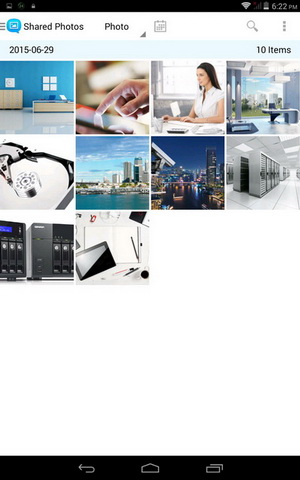



QNAP has a small selection of Android/iOS applications from where you can check the state of the NAS Server, enable/disable the installed stations, start/pause torrent/HTTP/FTP downloads and access many of its functions (audio/pictures/files) as seen above.
TESTING METHODOLOGY – PERFORMANCE RESULTS

Originally we had decided that since some of the NAS servers/devices we've tested in the past are no longer in our possession (naturally) we would keep performing the exact same testing methodology we did in the past for as long as possible in order to provide accurate comparison results. However since our real-life tests are not enough for some people we also decided to throw in ATTO and Crystal Disk Mark to cover the more demanding users. However as always we will be using up to six Seagate Constellation ES.3 4TB SATA III hard disk drive(s) with 3.5” compatible units and up to two (for now) Enterprise Capacity 2.5 HDD V3 2TB SATA III HDDs with 2.5” compatible units to perform several upload/download tests with 10.9GB (Single) and 40,8GB (RAID) files. Tests are repeated a total of 4 times after which we record the average numbers (from the 4 peak ones) into our charts. The network device used for 1GbE tests is the same Netgear D6300 AC1600 Gigabit ADSL2+ Modem/Router we’ve been using lately when performing tests on NAS servers. Since the 25th of June 2015 for 10GbE tests we’ll be using a Netgear ProSafe XS712T 10G Smart Switch and an Intel XT540-AT2 10GbE PCIe card (10GbE compatible NAS cards will be provided from each company and stated in each review).
SINGLE DISK TESTS



RAID TESTS



TEST RESULTS – 10GBE RESULTS
SINGLE DISK TESTS



RAID TESTS

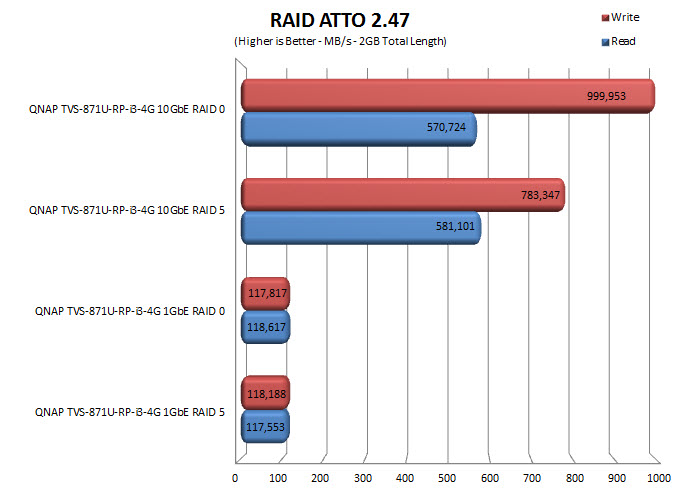

TEST RESULTS – TEMPERATURES / CONSUMPTION / NOISE
TEMPERATURES

POWER CONSUMPTION

NOISE LEVELS

CONCLUSION
Up until today 1GbE has been more than enough to cover the needs of households and small offices and in some cases it will continue to be sufficient. However that is certain to change soon for many people (perhaps sooner rather than later) thanks to the increasing size of data and 10GbE is simply put the obvious step forward especially since according to our tests it's indeed up to 10 times faster than 1GbE. Of course cost is always a problem and 10GbE compatible equipment doesn't come cheap thus it will take some time to become affordable for home use but that shouldn't pose a problem for offices and small businesses. The TVS-871U-RP however has many aces up its sleeve so aside the virtualization station which finally works with compatible systems as expected (took a while for QNAP to fix all the bugs) the more "demanding" users can also mount up to two mSATA flash drives (SSDs) as cache devices to further improve read performance. Unfortunately although the TVS-871U-RP-i3-4G is a powerful NAS server in 1GbE mode it fails to shine when compared to other high-end models so unless you plan on upgrading to 10GbE i think you'd be better off with a lower-spec model (perhaps the Celeron model?). All said and done the TVS-871U-RP is not perfect and much like every other rack mount NAS model out there it has two drawbacks. These are its noise levels and power consumption and although there's not much one can do about the noise still you can cut down consumption quite a bit just by removing one of the two power supplies (we did and power consumption dropped to 48W at idle and 62W at load). That way of course you're losing the redundant feature so if the PSU stops working the system will shut down but from personal experience with the TS-469U-RP which uses the same exact type that's extremely hard to happen (our TS-469U-RP has been working 24/7 on a single PSU for all these years without issue).
We've mentioned numerous times in the past that enterprise-grade products cost a lot because they offer much more compared to regular consumer ones and the TVS-871U-RP is obviously one such product. To be more specific the model we have here (TVS-871U-RP-i3-4G) currently retails for USD2574 inside the USA (Amazon.com) and for 2290Euros inside the EU (Amazon.co.uk) so yes you can say that it's quite expensive. Ontop of that add the need for a 10GbE switch and at least two 10GbE compatible Ethernet cards (one for the NAS and one for the PC) and one such system could potentially set you back even over USD5000/5000Euros (if you decide to get a switch like the XS712T) and that's not including the drives. So we don't expect people to throw money at something like this for home use (not anytime soon) but for small business and even offices solutions like the TVS-871U-RP-i3-4G by QNAP are the future and since this is the fastest and most complete NAS server to ever reach our lab it gets our Platinum Award, simple as that.
 PROS
PROS
- Excellent Build Quality
- Dual Core Intel Core i3-4150
- Top Of The Charts Performance
- Features
- 4GB DDR3 RAM (Expandable To 32GB)
- 4 Gigabit Ethernet Ports
- 10GbE Ready (Via PCIe Card)
- Redundant Power Supply Units
- 2 mSATA Ports
- 2 PCIe Slots
- 8 USB Ports (4xUSB 3.0 / 4xUSB 2.0)
- HDMI Output
- RAID 0/1/5/6/10/JBOD + Hot Spare/Swap Support
- Eight SATA III Bays(6Gb/s)
- QNAP QTS
- Android Apps
CONS
- Power Consumption (For Some)
- Noise Levels (For Some)
- Price (For Some)

 O-Sense
O-Sense


















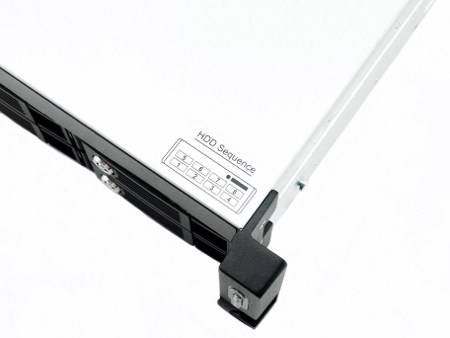
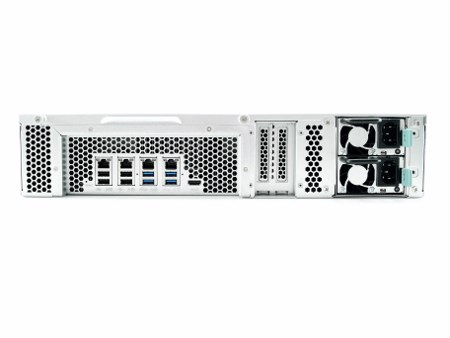







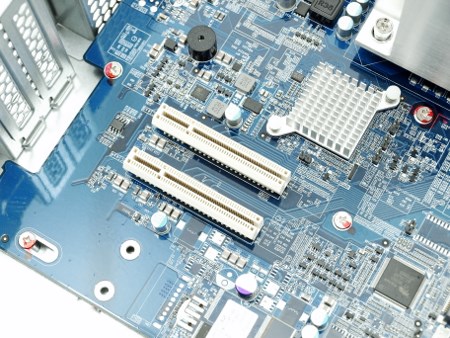









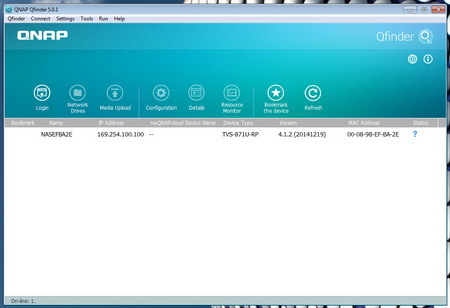







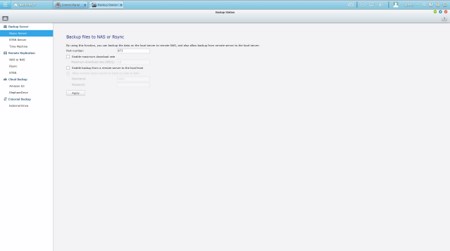

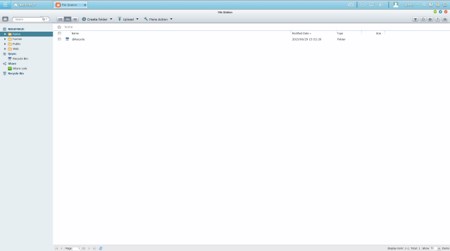








.png)

